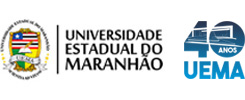Use este identificador para citar ou linkar para este item:
https://repositorio.uema.br/jspui/handle/123456789/4715| Título: | Avaliação de similaridade e diferenças entre os pigmentos de esmaltes de unha: utilizando cromatografia em camada delgada |
| Título(s) alternativo(s): | Assessment of similarity and differences between nail polish pigments: using thin layer chromatography |
| Autor(es): | Vilar, Keliane Pereira |
| Orientador: | Nunes, Péricles Mendes |
| Membro da Banca: | Silva, Ilna Gomes da |
| Membro da Banca: | Khan, Alamgir |
| Data do documento: | 2024-12-16 |
| Editor: | Universidade Estadual do Maranhão |
| Resumo: | Este trabalho teve como objetivo realizar uma avaliação comparativa entre os pigmentos presentes em esmaltes de unhas de diferentes marcas, utilizando a técnica de cromatografia em camada delgada (CCD). Foram analisados fatores de retenção (Rf) e interações químicas, com foco em identificar similaridades e diferenças entre as formulações químicas. A metodologia incluiu a aplicação de solventes variados, como acetato de etila, hexano, álcool metílico e acetonitrila, além de misturas binárias e ternárias, visando aperfeiçoar a separação dos pigmentos. Os resultados revelaram que a escolha do solvente influencia diretamente a mobilidade e a separação dos componentes. Para os resultados analisou-se que as marcas Colorama® e Impala®, no eluente álcool metílico na revelação a vapor de iodo apresentaram a maior similaridade em relação aos pigmentos utilizados, especialmente nas cores rosa, azul, roxo, amarelo e vermelho, onde todas as marcas mostraram o mesmo valor de fator de retenção Rf=1, indicando a presença de pigmentos semelhantes. Em contraste, a marca Risqué® apresentou diferenças significativas, especialmente na cor verde, onde seus pigmentos não estavam presentes nas outras duas marcas, com um valor de Rf=0,81. Assim, Colorama® e Impala® são as marcas mais semelhantes em termos de composição de pigmentos, enquanto Risqué® se destaca por ter uma composição diferente em algumas cores |
| Resumo: | This study aimed to perform a comparative evaluation of the pigments present in nail polishes of different brands, using the thin layer chromatography (TLC) technique. Retention factors (Rf) and chemical interactions were analyzed, with a focus on identifying similarities and differences between the chemical formulations. The methodology included the application of various solvents, such as ethyl acetate, hexane, methyl alcohol and acetonitrile, in addition to binary and ternary mixtures, aiming to improve the separation of the pigments. The results revealed that the choice of solvent directly influences the mobility and separation of the components. For the results, it was analyzed that the brands Colorama® and Impala®, in the methyl alcohol eluent in the iodine vapor development, presented the greatest similarity in relation to the pigments used, especially in the colors pink, blue, purple, yellow and red, where all brands showed the same value of retention factor Rf = 1, indicating the presence of similar pigments. In contrast, the Risqué® brand presented significant differences, especially in the green color, where its pigments were not present in the other two brands, with a value of Rf=0.81. Thus, Colorama® and Impala® are the most similar brands in terms of pigment composition, while Risqué® stands out for having a different composition in some colors |
| Palavras-chave: | Cromatografia em camada delgada Similaridade Química Pigmentos Cosméticos Fator de Retenção (Rf) Solventes variados Misturas binárias e ternárias Thin layer chromatography Cosmetic Pigments Various solvents Chemical Similarity Retention Factor (Rf) Binary and ternary mixtures |
| Aparece nas coleções: | Curso de Licenciatura em Química - CECEN - UEMA - Monografias |
Arquivos associados a este item:
| Arquivo | Descrição | Tamanho | Formato | |
|---|---|---|---|---|
| TCC KELIANE PEREIRA VILAR CECEN UEMA 2024.pdf | PDF A | 2.55 MB | Adobe PDF | Visualizar/Abrir |
Os itens no repositório estão protegidos por copyright, com todos os direitos reservados, salvo quando é indicado o contrário.
